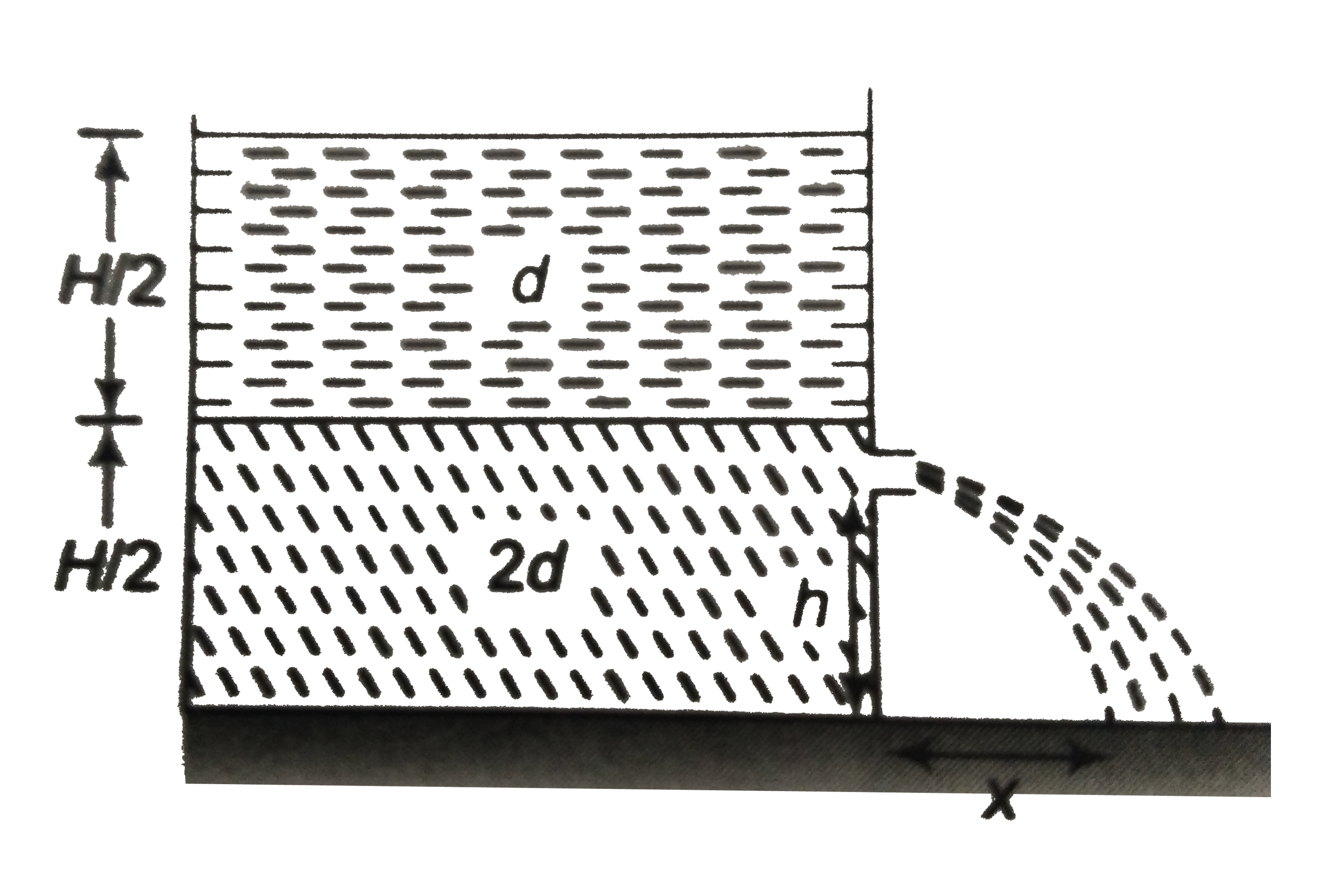Spherical balls of radius 'R' are falling in a viscous fluid of viscosity 'η' with a velocity 'v'. The retarding viscous force acting on the spherical ball isSolution in Gujrati
directly proportional to R but inversely propotional to
Directly proportional to both radius R and velocity v
inversely propotional to both radius R and velocity v
inversely propotional to R but directly propotional to velocity v
The correct Answer is:B
Step by step video, text & image solution for Spherical balls of radius 'R' are falling in a viscous fluid of viscosity 'eta' with a velocity 'v'. The retarding viscous force acting on the spherical ball is by Physics experts to help you in doubts & scoring excellent marks in Class 11 exams.
Updated on:21/07/2023Topper's Solved these Questions
- ELASTICITY, SURFACE TENSION AND FLUID MECHANICSBOOK - ALLEN CHAPTER - ELASTICITY, SURFACE TENSION AND FLUID MECHANICSEXERCISE - Exercise 5 B (MCQ)
13 Videos
- ELASTICITY, SURFACE TENSION AND FLUID MECHANICSBOOK - ALLEN CHAPTER - ELASTICITY, SURFACE TENSION AND FLUID MECHANICSEXERCISE - Exercise 5 B (Multiple correct answers)
2 Videos
- ELASTICITY, SURFACE TENSION AND FLUID MECHANICSBOOK - ALLEN CHAPTER - ELASTICITY, SURFACE TENSION AND FLUID MECHANICSEXERCISE - Exercise 4 B (Bran storming Subjective Exercise)
11 Videos
- CENTRE OF MASSBOOK - ALLEN CHAPTER - CENTRE OF MASSEXERCISE - EXERCISE-V B
19 Videos
- ERROR AND MEASUREMENTBOOK - ALLEN CHAPTER - ERROR AND MEASUREMENTEXERCISE - Part-2(Exercise-2)(B)
22 Videos
Similar Questions
Water from a tap emerges vertically downwards with an initial spped of 1.0ms−1. The cross-sectional area of the tap is 10−4m2. Assume that the pressure is constant throughout the stream of water, and that the flow is steady. The cross-sectional area of the stream 0.15 m below the tap is
View SolutionA solid sphere of radius R and density ρ is attached to one end of a mass-less spring of force constant k. The other end of the spring is connected to another solid sphere of radius R and density 3ρ. The complete arrangement is placed in a liquid of density 2ρ and is allowed to reach equilibrium. The correct statements(s) is (are)
View SolutionA container of large uniform cross-sectional area A resting on a horizontal surface, holes two immiscible, non-viscon and incompressible liquids of densities d and 2d each of height H/2 as shown in the figure. The lower density liquid is open to the atmosphere having pressure P0. A homogeneous solid cylinder of length L(L<H/2) and cross-sectional area A/5 is immeresed such that it floats with its axis vertical at the liquid-liquid interface with length L/4 in the denser liquid,

The cylinder is then removed and the original arrangement is restroed. a tiny hole of area s(s<<A) is punched on the vertical side of the container at a height h(h<H/2). As a result of this, liquid starts flowing out of the hole with a range x on the horizontal surface.
The total pressure with cylinder, at the bottom of the container is
View SolutionTwo particles of masses m1 and m2 in projectile motion have velocities →v1 and →v2 , respectively , at time t=0. They collide at time t0. Their velocities become →v'1 and →v'2 at time 2t0 while still moving in air. The value of ∣∣∣(m1→v'1+m2→v'2)−(m1→v1+m2→v2)∣∣∣
View SolutionA cube has a side of length 1.2×10−2m. Calculate its volume.
View SolutionA small spherical ball of radius r falls with velocity υ through a liquid having coeffiecinet of viscosity η. find viscous darg F on the wall if it depends or r,υ,η.TakeK=6π
View SolutionA spherical metal ball of mass m and radius (r ) is falling through a viscous medium. The value of its terminal velocity is proportional to
View SolutionThe viscous force Fv acting on a small ball of radius r moving in medium of coefficient of viscosity η with speed v is proportional to ηarbvc. Find the values of a, b and c.
View SolutionThe terminal velocity V of a spherical ball of lead of radius R falling through a viscous liquid varies with R such that
View SolutionA small spherical ball falling through a viscous medium of negligible density has terminal velocity v. Another ball of the same mass but of radius twice that of the earlier falling through the same viscous medium will have terminal velocity
View SolutionThe viscous force on a spherical body, when it moves through a viscous liquid, depends on the radius of the body, the coefficient of viscosity of the liquid and the velocity of the body.Find an expression for the viscous force.
View SolutionSpherical balls of radius R are falling in a viscous fluid of velocity v .The retarding viscous force acting on the spherical ball is
View SolutionR त्रिज्या की गोल गेंद η श्यानता के किसी श्यान तरल में वेग v से गिर रही है । गोल गेंद पर कार्यरत मंदक श्यान बल है -
View SolutionA spherical ball is falling with a uniform velocity v through a viscous medium of coefficient of viscosity eta . If the viscous force acting on the spherical ball is F then
View SolutionR ব্যাসার্ধের গোলাকার বল (η) সান্দ্রতাঙ্কবিশিষ্ট একটি সান্দ্র মাধ্যমের মধ্য দিয়ে v বেগে পতনশীল। গোলাকার বলের ওপর সান্দ্রতাজনিত বল F হলে
View SolutionSpherical balls of radius R are falling in a viscous fluid of velocity v .The retarding viscous force acting on the spherical ball is
View Solution
